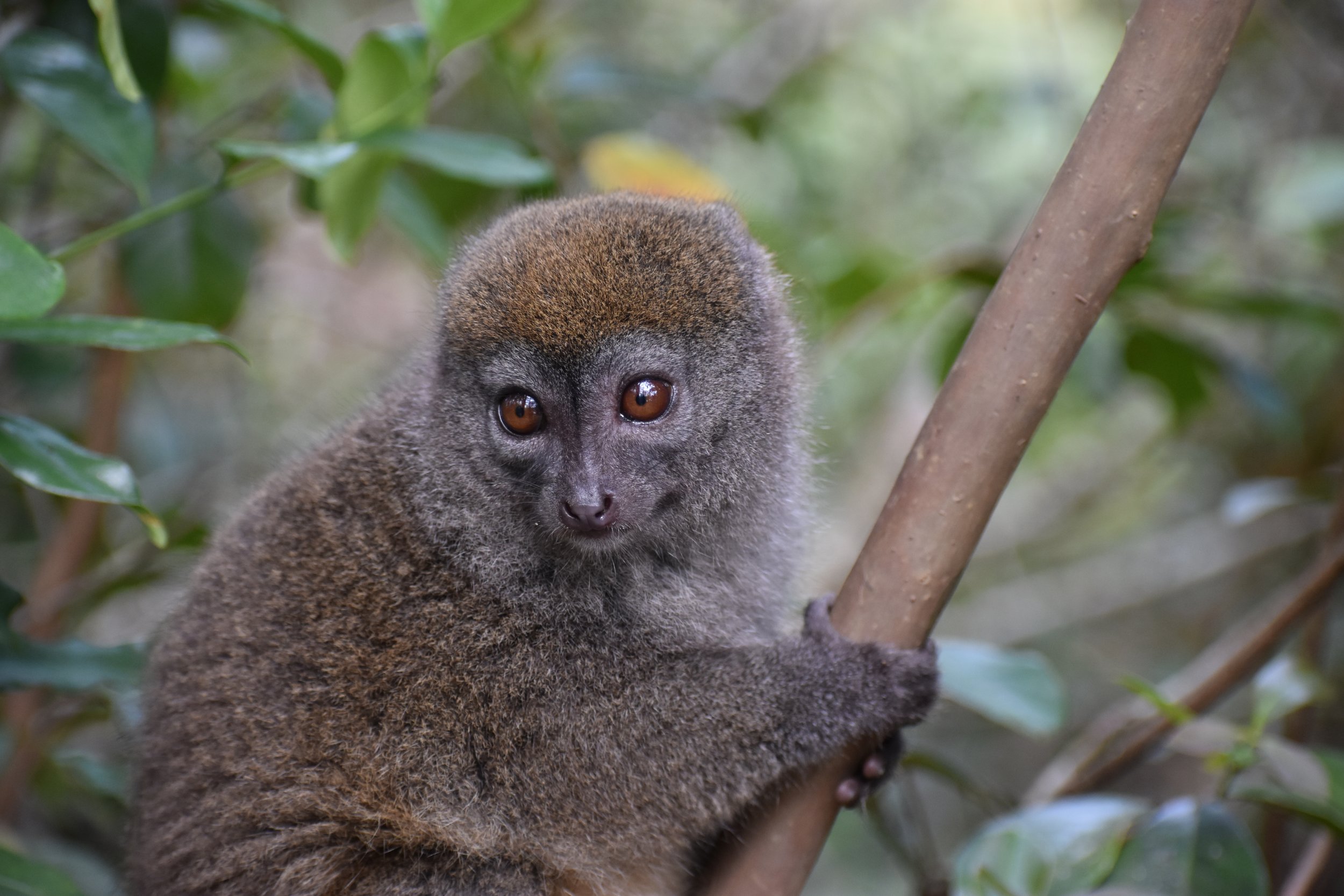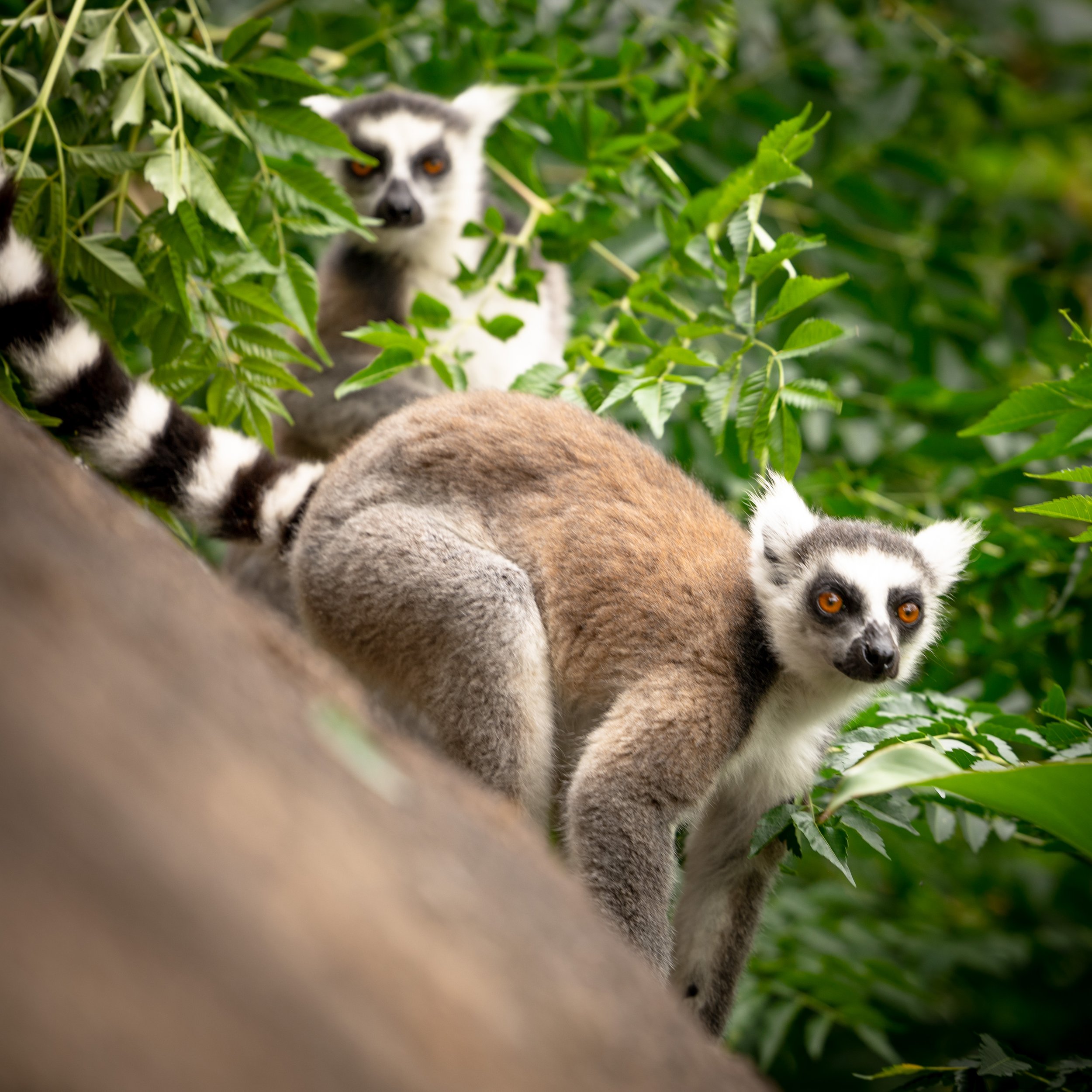Celebrate World Lemur Day
Black and white Ruffed Lemur
World Lemur Day is celebrated this year on Friday 27th October. It's a day to celebrate lemurs and spread the word about the importance of their conservation. With 98% of lemur species threatened with extinction and 31% critically endangered, the importance of lemurs and their positive impact on their environment cannot be overstated. Lemurs face an array of dangers across Madagascar, the only place where they exist in the wild. Some people hunt them for food, or collect them for the pet trade, but the single greatest threat to lemurs is habitat loss, driven by everything from agriculture, logging and mining to climate change.
Madagascar is world famous for its lemurs, being home to over 107 listed species ranging in size from the pygmy mouse lemur, the size of a house mouse, to the indri, the size of a human toddler. They make up over one fifth of the 505 primate species of the world with new species still being discovered.
We at Feedback Madagascar have been working hand in hand with the people of Madagascar for over 25 years to improve people’s lives, protect the forests and save lemurs. We recognise the greatest threats to lemurs are human needs and behaviours.
Subsistence farmers, without support, have no choice but to cut and burn forest to create fields to survive. Feedback Madagascar works with people to find alternatives. Often this involves finding techniques to use existing fields repeatedly and to produce more, and to start viable new businesses that can reach local and international markets, like animal husbandry, trading and silk weaving. Clean water, health, education and human rights are also improved so people can flourish and strive to live in harmony with nature..
We work with 540 communities who live around and depend upon the COFAV Protected Area, a 450,000 hectare corridor of rainforest between Ambositra and Vondrozo. This forest has 11 lemur species in it, more than any other forest area. These include the rare greater bamboo lemur (only 500 surviving) and the golden bamboo lemur (only 600 surviving), the fat-tailed dwarf lemur who is the only primate to hibernate (living off its fat tail), the elusive aye-aye and two species familiar to us in zoos, the ring-tailed lemur and the black and white ruffed lemur.
Dr Mahefa Ralisata, Conservation Project Manager at Feedback Madagascar stresses the importance of lemurs in helping restore the rainforest “lemurs eat and distribute seeds throughout the forest, helping it regenerate, they are a good indicator of the health of the forest. If there are many lemurs the rest of the forest species are likely to be in good shape” she explains. Dr Ralisata works with communities and discusses with them the lemurs' role in sustaining the ecological equilibrium of their fragile ecosystems. They serve as vital seed dispersers, ensuring the propagation of a diverse range of plant species. “Whilst working hard to replant lost forest Feedback Madagascar and our partner communities get a lot of encouragement knowing that lemurs are planting too!” Together people and lemurs are doing their bit to protect the forest and in turn mitigate the impacts of climate change which includes excessive droughts and floods. Forests serve to reduce the damage of these scourges by controlling watersheds.
Dr Ralisata also works with schools and youth clubs pointing out the similarities lemurs have with humans. Not only do they have hands fingers and toes like us but other similarities include:
Social behaviour: Like humans, some species of lemurs exhibit complex social behaviours. They live in groups and often form intricate social structures within their communities. These groups may have hierarchical systems and exhibit various forms of communication and interaction among members.
Tool use: Some lemurs have been observed using tools, such as using leaves to make sleeping platforms or using objects to help them extract food. While their tool use is far from that of humans, it demonstrates a level of cognitive ability and problem-solving skills.
Communication: Lemurs communicate through various vocalisations, body language, and even scents. They use these forms of communication to convey information, establish social hierarchies, and maintain group cohesion, much like humans use language and non-verbal cues to interact and communicate with one another.
Parental care: Similar to humans, some lemur species exhibit strong maternal instincts and provide extensive care for their offspring. They engage in activities such as grooming, carrying, and nursing their young, fostering strong bonds within their families.
Longevity: While lemurs have shorter lifespans than humans, some species can live for several decades in captivity. Their relatively longer lifespans compared to other mammals of similar size might suggest some physiological similarities to humans in terms of ageing and longevity.
Problem-solving abilities: Lemurs demonstrate certain problem-solving abilities, especially when it comes to foraging for food or navigating their environment. Their ability to adapt to changing environmental conditions and find creative solutions to challenges is reminiscent of human problem-solving skills.





